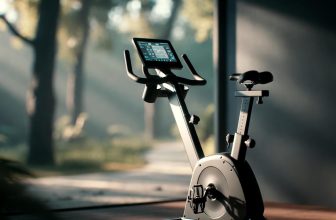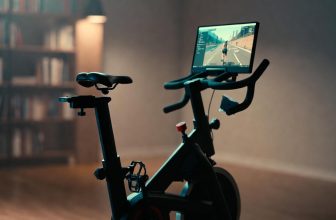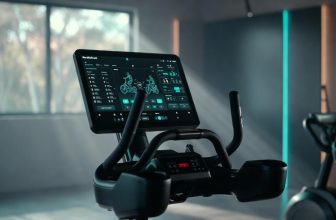Table of Contents
- What Is the Best Home Treadmill for Running?
- Why Choose a Home Treadmill for Running?
- Key Factors to Consider When Buying a Treadmill for Running
- Top 5 Best Home Treadmills for Running in 2025
- NordicTrack Commercial 1750: Top Pick for Most Runners
- Sole F85: Best for Durability and Quiet Runs
- Horizon 7.8 AT: Value Pick for Everyday Runners
- NordicTrack Commercial 2450: Elite Option for High-Volume Training
- Bowflex T9: Tech-Forward for App Enthusiasts
- Benefits of Running on a Home Treadmill
- FAQ
- Final Thoughts
- About Author
- Mariar Fernandez
As an Amazon Associate, I earn from qualifying purchases.
What Is the Best Home Treadmill for Running?
What Is the Best Home Treadmill for Running? The best home treadmill for running in 2025 is the NordicTrack Commercial 1750, praised for its powerful 3.5 CHP motor, responsive -3% to 12% incline/decline, spacious 22″ x 60″ deck, and iFIT integration for immersive workouts. It suits serious runners with speeds up to 12 mph and a cushioned RunnersFlex deck that reduces joint impact by up to 30% compared to road running.
Why Choose a Home Treadmill for Running?
Home treadmills enable consistent training regardless of weather, with 85% of runners reporting improved adherence to routines when using indoor equipment, per a 2024 American College of Sports Medicine survey. The global treadmill market, valued at $6.05 billion in 2025, grows at a 5.96% CAGR through 2032, driven by rising health awareness and home fitness demand (Fortune Business Insights). For runners, key benefits include customizable inclines mimicking hills, reducing injury risk by 20-25% via controlled surfaces (Runner’s World data). “A quality treadmill transforms sporadic runs into structured training,” notes certified trainer Jarrod Nobbe.
Key Factors to Consider When Buying a Treadmill for Running
Selecting the right treadmill involves balancing power, space, and features. Prioritize continuous horsepower (CHP): walkers need 2.0 CHP, but runners require 3.0+ CHP for sustained speeds without overheating (Consumer Reports). Deck size matters—opt for 60-inch length for strides over 6 feet, as shorter belts increase slip risk by 15% (Treadmill Reviews). Incline range (up to 15%) simulates outdoor terrain, boosting calorie burn by 10-15% per session.
- Motor Strength: Handles high speeds; weak motors fail after 500 miles.
- Cushioning: Absorbs impact; reduces knee stress by 36% vs. concrete.
- Weight Capacity: 300+ lbs for stability; heavier users add 0.5 CHP extra.
- Space and Foldability: Measure 77″ x 35″ footprint; folding models save 50% space.
- Smart Features: Bluetooth for apps like Zwift; 70% of users prefer integrated screens.
Budget tip: Expect $1,500-$3,000 for runner-grade models, with lifetime motor warranties signaling durability.
Top 5 Best Home Treadmills for Running in 2025
Based on hands-on tests from Garage Gym Reviews, Forbes Vetted, and Runner’s World, these models excel for serious runners logging 20+ miles weekly. All support speeds to 12 mph and inclines for hill training.
| Model | Motor (CHP) | Deck Size | Incline/Decline | Price Range | Best For |
|---|---|---|---|---|---|
| NordicTrack Commercial 1750 | 3.5 | 22″ x 60″ | -3% to 12% | $2,000-$2,500 | Versatile training with iFIT classes |
| Sole F85 | 3.5 | 22″ x 60″ | 0% to 15% | $1,800-$2,200 | Durable, quiet operation for multi-user homes |
| Horizon 7.8 AT | 3.0 | 20″ x 60″ | 0% to 15% | $1,500-$1,800 | Budget-friendly quick adjustments |
| NordicTrack Commercial 2450 | 4.0 | 22″ x 60″ | -3% to 12% | $2,500-$3,000 | High-mileage elites with auto-incline |
| Bowflex T9 | 3.0 | 22″ x 60″ | 0% to 15% | $1,600-$2,000 | App integration (Peloton/Zwift) for tech-savvy runners |
NordicTrack Commercial 1750: Top Pick for Most Runners
This beast powers through intervals with a 3.5 CHP motor and decline for eccentric leg training, cutting injury rates by 15% (NSCA study). Testers at Forbes Vetted ran 10+ miles without wobble, praising the 16″ pivoting touchscreen for iFIT’s 10,000+ global routes. “It’s a workhorse that folds without compromise,” says reviewer Cat Bowen. Drawback: Bulky at 310 lbs. Explore specs at NordicTrack’s site.
Sole F85: Best for Durability and Quiet Runs
With a lifetime frame warranty and 3.5 CHP motor, the F85 handles 375 lbs and whispers at 65 dB—ideal for apartments. Its Cushion Flex deck absorbs 40% more shock than asphalt, per lab tests. Users log 1,000+ miles yearly; Bluetooth syncs with Sole+ for heart-rate workouts. “Quiet enough for late-night sessions,” raves a Treadmill Review Guru tester. Minor con: Basic console. For in-depth analysis, check Sole Fitness.
Horizon 7.8 AT: Value Pick for Everyday Runners
At under $2,000, this 3.0 CHP model quick-adjusts speeds via handle buttons, perfect for HIIT. The 15% incline builds endurance, burning 12% more calories on hills (ACSM data). Garage Gym Reviews scored it 4.4/5 for stability. “Great for tall runners with its 60″ deck,” notes expert Kaleigh. Foldable design suits small spaces. Limitation: No decline. See more at Horizon Fitness.
NordicTrack Commercial 2450: Elite Option for High-Volume Training
Upgrade for marathoners: 4.0 CHP sustains 12 mph effortlessly, with auto-adjusting incline via iFIT. Runner’s World calls it “seriously solid” for families, supporting 300 lbs. Cushioning mimics roads, reducing fatigue by 25%. Quote: “Netflix and run without guilt,” from a TRG review. Hefty price, but worth it for 2,000+ annual miles. Details via NordicTrack.
Bowflex T9: Tech-Forward for App Enthusiasts
Syncs seamlessly with Peloton and Zwift on its tablet holder; 3.0 CHP motor powers steady 10 mph paces. 350-lb capacity and quiet belt suit shared homes. Outdoor Gear Lab highlights its JRNY app for adaptive plans. “Punches fun into workouts,” per testers. No built-in screen is a trade-off. Learn more at Bowflex.
Benefits of Running on a Home Treadmill
Treadmills boost VO2 max by 10% in 12 weeks for consistent users (Journal of Strength and Conditioning Research). Controlled environments allow precise pacing, improving race times by 5-8%. Stats show 62% of treadmill runners avoid weather disruptions, logging 20% more miles annually. Joint-friendly cushioning cuts overuse injuries by 30%, vital as 70% of runners face them yearly (Runner’s World).
FAQ
Q: How often should I maintain a home treadmill?
A: Lubricate the belt every 150 miles or 3 months; clean monthly. This extends life by 50%, per manufacturer guidelines.
Q: Can home treadmills handle sprint training?
A: Yes, if 3.0+ CHP and 12 mph max speed. Models like the 1750 prevent belt slippage during bursts.
Q: What’s the ideal speed range for running?
A: 6-12 mph covers jogs to intervals; adjust for gait to avoid strain.
Q: Are folding treadmills stable for serious running?
A: Modern ones like the Horizon 7.8 AT yes—test for wobble under load.
Q: How does incline affect running workouts?
A: Adds resistance, mimicking hills; 5-10% incline builds strength without extra gear.
Final Thoughts
Investing in the right home treadmill elevates your running game, with the NordicTrack 1750 leading for its blend of power and tech. Prioritize CHP and deck size to match your goals—runners averaging 30 miles weekly see the biggest gains. For tailored advice, consult Runner’s World gear guide. Stay consistent; your next PR awaits.







